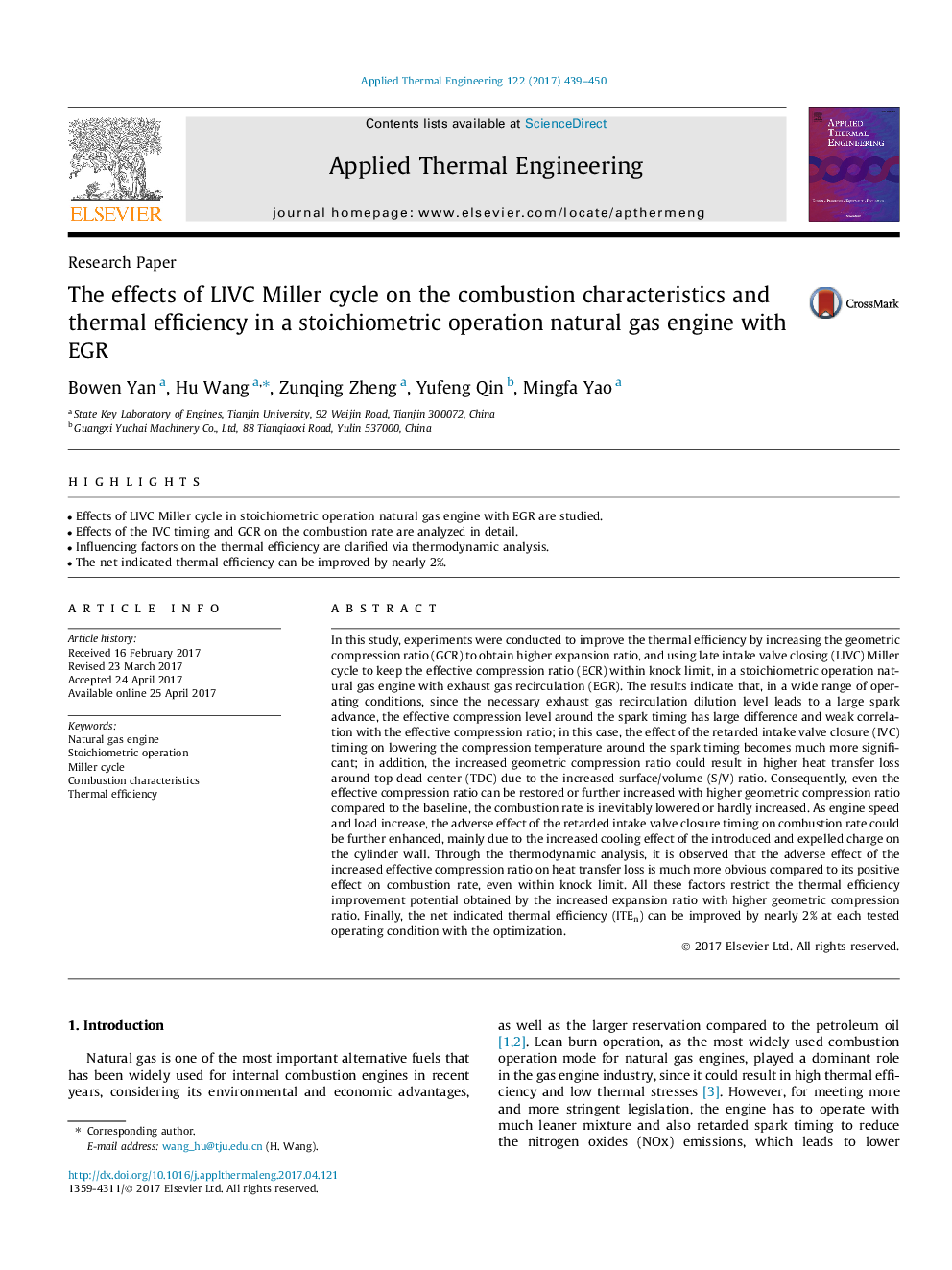| Article ID | Journal | Published Year | Pages | File Type |
|---|---|---|---|---|
| 4990937 | Applied Thermal Engineering | 2017 | 12 Pages |
Abstract
In this study, experiments were conducted to improve the thermal efficiency by increasing the geometric compression ratio (GCR) to obtain higher expansion ratio, and using late intake valve closing (LIVC) Miller cycle to keep the effective compression ratio (ECR) within knock limit, in a stoichiometric operation natural gas engine with exhaust gas recirculation (EGR). The results indicate that, in a wide range of operating conditions, since the necessary exhaust gas recirculation dilution level leads to a large spark advance, the effective compression level around the spark timing has large difference and weak correlation with the effective compression ratio; in this case, the effect of the retarded intake valve closure (IVC) timing on lowering the compression temperature around the spark timing becomes much more significant; in addition, the increased geometric compression ratio could result in higher heat transfer loss around top dead center (TDC) due to the increased surface/volume (S/V) ratio. Consequently, even the effective compression ratio can be restored or further increased with higher geometric compression ratio compared to the baseline, the combustion rate is inevitably lowered or hardly increased. As engine speed and load increase, the adverse effect of the retarded intake valve closure timing on combustion rate could be further enhanced, mainly due to the increased cooling effect of the introduced and expelled charge on the cylinder wall. Through the thermodynamic analysis, it is observed that the adverse effect of the increased effective compression ratio on heat transfer loss is much more obvious compared to its positive effect on combustion rate, even within knock limit. All these factors restrict the thermal efficiency improvement potential obtained by the increased expansion ratio with higher geometric compression ratio. Finally, the net indicated thermal efficiency (ITEn) can be improved by nearly 2% at each tested operating condition with the optimization.
Related Topics
Physical Sciences and Engineering
Chemical Engineering
Fluid Flow and Transfer Processes
Authors
Bowen Yan, Hu Wang, Zunqing Zheng, Yufeng Qin, Mingfa Yao,
